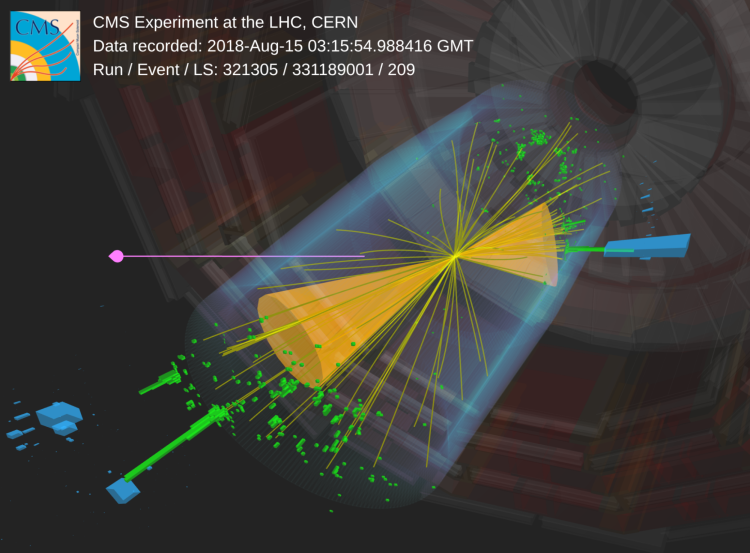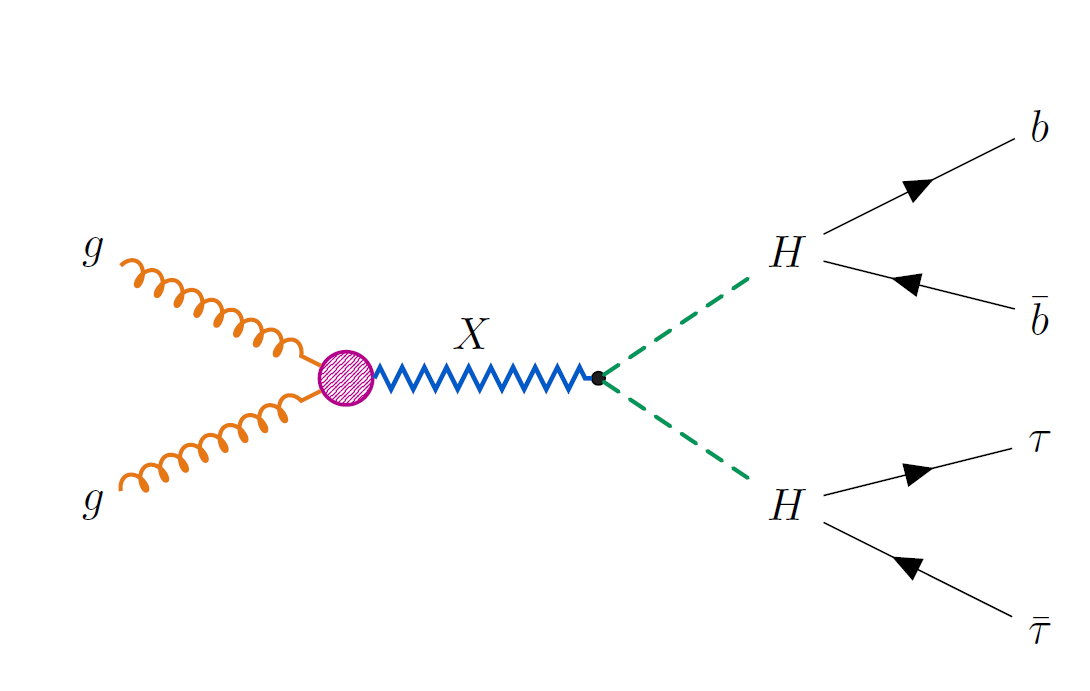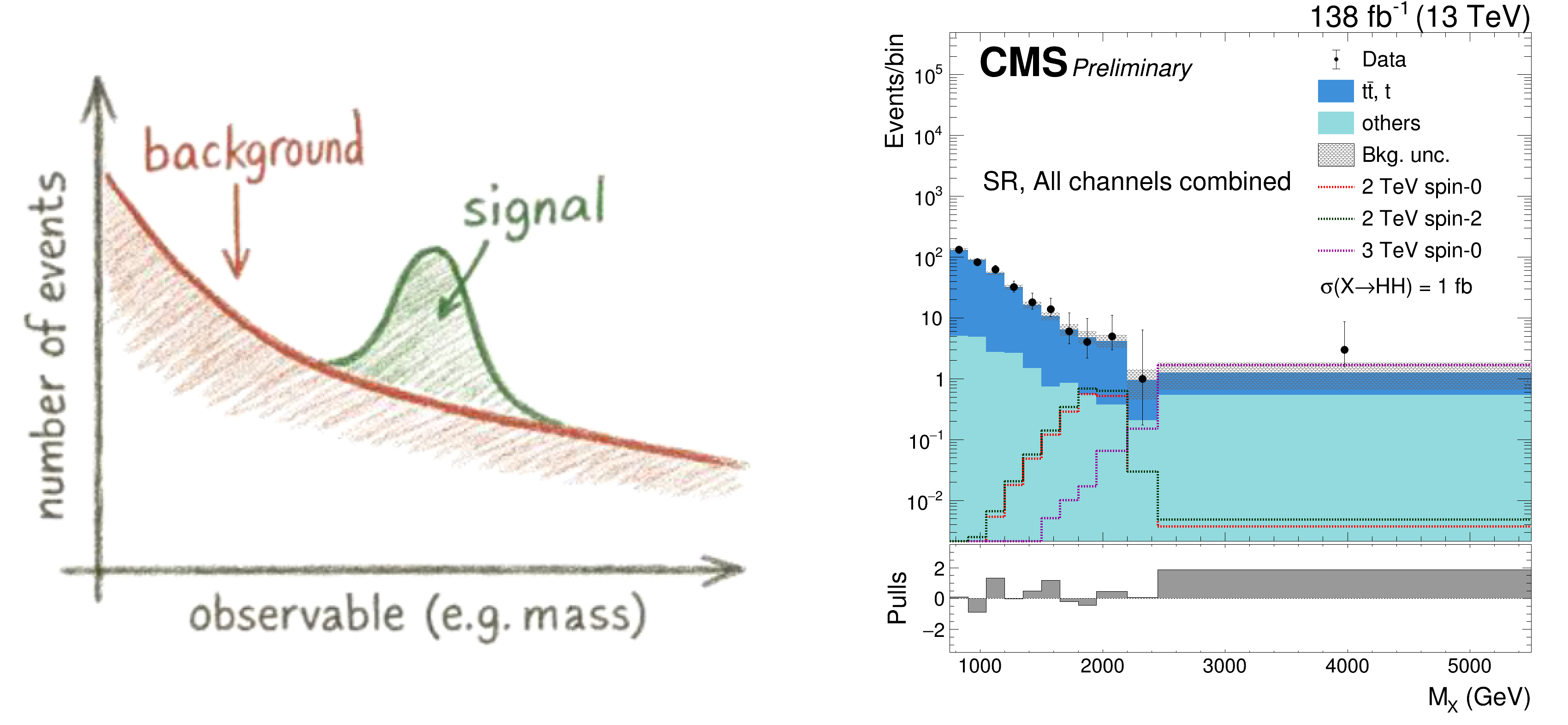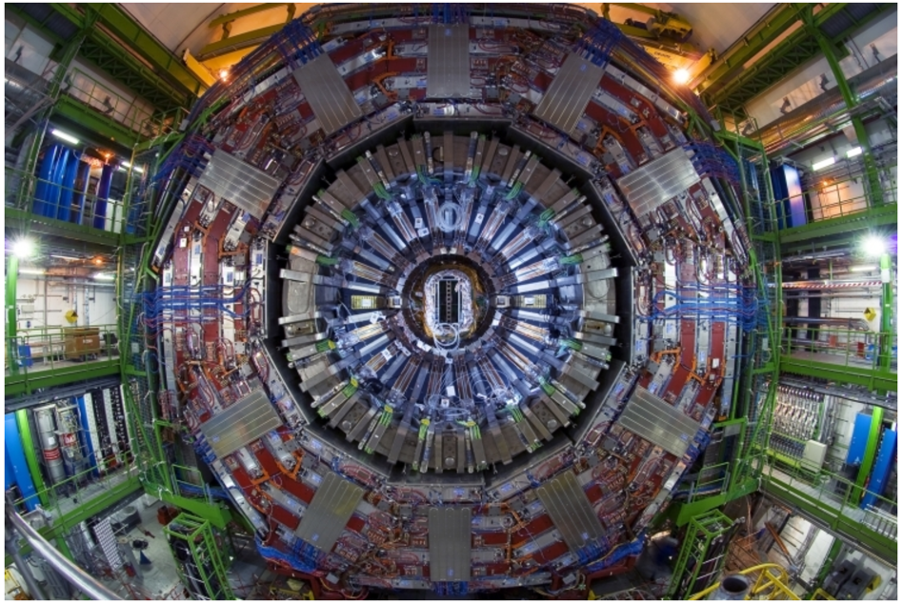
CMS scientists are on the hunt for a new, heavy particle that decays into a pair of Higgs bosons. Using the final state with two bottom quarks and two tau leptons, the search sets the most stringent limits to date in the mass range 1.4–4.5 TeV.
The CMS experiment is searching for signs of new, heavy particles that could decay into pairs of Higgs bosons – we call this an HH signature. These signatures are particularly exciting because they can give us clues about the stability of our universe and open a window to physics beyond our current understanding of fundamental particles and their interactions, the standard model.

Above: Diagram showing a new physics process explored in this search. Two protons collide and produce a new heavy particle X, which then decays into two standard model Higgs bosons , which in turn give two bottom quarks and two tau leptons in the final state.
In this search, we focus on a final state where one Higgs boson decays to two bottom quarks (H→bb) and the other decays to two tau leptons (H→ττ). This final state offers a promising balance: it has a relatively large probability of occurring, while also allowing us to separate signal events from background processes. Performing such a search is far from straightforward. If a new heavy particle were produced at the LHC, it would impart a large momentum, a “boost”, to its daughter Higgs bosons. The boost causes the decay products of each Higgs boson to be collimated and overlap in the detector, making their reconstruction quite challenging.
To meet this challenge, CMS uses advanced reconstruction and machine-learning techniques. For the H→bb decay, the bottom quarks form collimated sprays of particles, called jets, which overlap to a large extent. To identify them, a graph neural network, called ParticleNet, is trained to recognize the pattern of the two bottom quark jets inside a single, large jet.
Reconstructing the H→ττ is a two-step process: first, we untangle and reconstruct the two really close taus, and then we use a convolutional neural network, called Boosted DeepTau to figure out the characteristics of these reconstructed taus and tell them apart from background jets. Because tau leptons also produce invisible neutrinos, we apply a likelihood-based method to obtain the four-momentum of the parent Higgs boson.
Once both Higgs bosons are reconstructed, we can combine them to measure the mass of the system. If a new heavy particle exists, it would appear as a peak, or “bump,” on top of the smoothly falling background distribution. This strategy is often referred to as a “bump hunt” – a classic tool in the search for new particles at colliders.

Left: The sketch illustrates how we perform a “bump hunt.” Background processes fall smoothly with increasing mass, while a new particle would create a visible peak on top of this distribution. Right: We reconstruct the mass of Higgs boson pairs from collision data and compare it to standard model background predictions (shown in color). The black points show the recorded data, while the dashed lines illustrate how new heavy particles could appear. The data follow the standard model expectation, and CMS does not observe a significant excess.
After analyzing data from the full LHC Run 2 (2016–2018), CMS did not observe any significant deviation from the standard model prediction. While this means that no new particle was discovered in this final state yet, the analysis sets the most stringent upper limits to date on the possible production of heavy particles decaying into Higgs boson pairs in the bbττ final state in the mass range of 1.4 TeV to 4.5 TeV.
“The results may not yet show evidence of new physics, but they are paving the way,” says Ganesh Parida, a PhD student at the University of Wisconsin–Madison, who carried out this analysis together with Camilla Galloni and Deborah Pinna, both scientists at the University of Wisconsin–Madison and members of CMS. “It has been both exciting and rewarding to learn, develop, and apply sophisticated techniques to probe these challenging boosted regimes.”
The biggest challenge here is the sheer number of events we can collect for these difficult "boosted" scenarios. That is why the ongoing Run 3 and the upcoming High-Luminosity runs of the LHC are so important – they will give us the biggest datasets ever for a potential discovery!
Written by: Ganesh Parida, for the CMS Collaboration
Edited by: Muhammad Ansar Iqbal
Read more about these results:
-
CMS Physics Analysis Summary (B2G-24-014): "Search for heavy resonances decaying into two Higgs bosons in the bbττ final state in proton-proton collisions at √s = 13 TeV"
-
@CMSExperiment on social media: Bluesky - Facebook - Instagram - LinkedIn - TikTok - Twitter/X - YouTube

